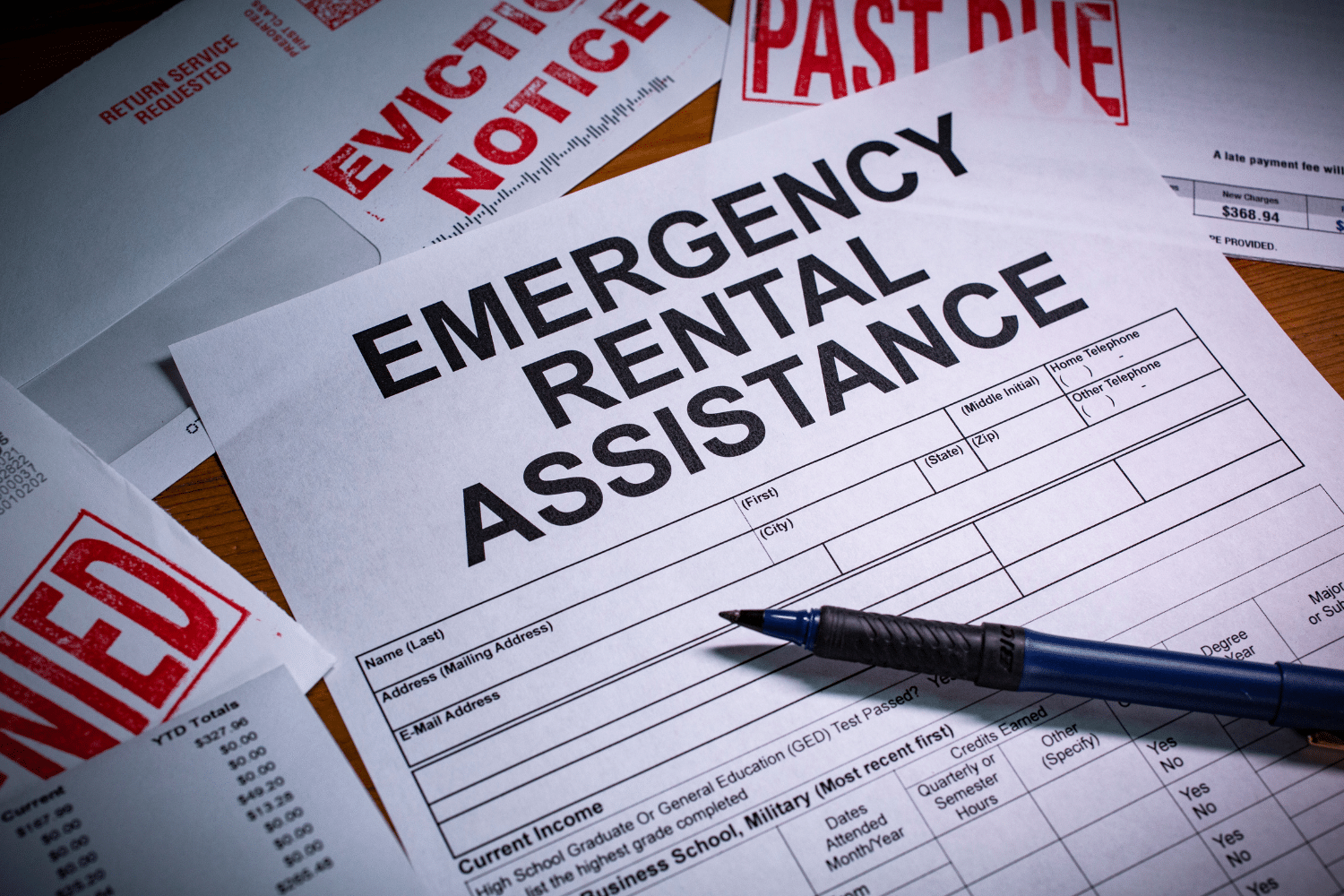Community Action Agencies (CAA) help low-income families achieve self-sufficiency. With over 1,000 agencies across the U.S., they provide targeted assistance to address local needs, combat poverty, and improve lives. In this article, we’ll explore what CAAs are, how they work, their history, key programs, and how you can get involved.
Key Takeaways
- Community Action Agencies (CAAs) are pivotal in fostering self-sufficiency among low-income individuals by providing tailored assistance programs and managing over $5.6 billion in resources annually.
- CAAs emerged from legislative efforts like the Economic Opportunity Act of 1964 and the War on Poverty, despite facing early political resistance and operational challenges, ultimately contributing to a significant reduction in the U.S. poverty rate.
- Governed by a unique tripartite board structure, CAAs administer various programs such as the Low-Income Home Energy Assistance Program (LIHEAP), Head Start, and job training services, thereby addressing immediate needs and promoting long-term self-sufficiency in communities.
Understanding Community Action Agencies

Dedicated to promoting self-sufficiency, Community Action Agencies (CAAs) improve communities by providing targeted assistance to low-income individuals. These agencies are crucial in addressing both community-wide and individual challenges, equipping citizens with the tools they need to lift themselves out of poverty. With over 1,000 CAAs across the United States and its territories, they manage more than $5.6 billion in public and private resources annually, showcasing their extensive reach and impact.
CAAs serve more than 9.3 million low-income individuals, underscoring their significant role in community development. One of the key strengths of CAAs is their operational flexibility, allowing them to tailor programs specifically to the unique needs of their local communities. This adaptability ensures that the services provided are relevant and effective, directly addressing the most pressing issues faced by each community.
With staff drawn from community residents and operating hours often extended, CAAs are deeply entrenched within their regions. This local involvement not only enhances their effectiveness but also fosters a sense of ownership and participation among community members. Operating a variety of programs aimed at poverty prevention and reduction, CAAs significantly enhance the quality of life for numerous individuals and families.
The Historical Context of CAAs
Community Action Agencies (CAAs) trace their roots back to the socio-political upheaval of the 1960s, when America faced significant challenges related to poverty and inequality. The local political regimes initially felt threatened by the empowerment of poor political activists. These activists were provided with funding and resources from the federal government. Prominent political leaders resisted this shift in power dynamics, expressing displeasure over the power-sharing that CAAs introduced in poor and minority neighborhoods.
Despite these challenges, CAAs emerged as a powerful force in the fight against poverty, driven by legislative support and community activism. Key among these legislative efforts was the Economic Opportunity Act of 1964, which laid the groundwork for the establishment of CAAs. The War on Poverty further solidified their role, positioning CAAs as the primary mechanism for delivering federal anti-poverty programs at the community level.
The Economic Opportunity Act of 1964
The Economic Opportunity Act of 1964 was a cornerstone of President Lyndon B. Johnson’s Great Society plan, aimed at eliminating poverty and racial injustice in America. Signed into law by President Johnson, this act sought to create a comprehensive framework for combating poverty through various initiatives, including:
- The establishment of Community Action Agencies (CAAs)
- Job training programs
- Work-study programs
- Head Start, a program for early childhood education
- Legal services for the poor
- The creation of the Office of Economic Opportunity
These initiatives aimed to provide low-income individuals and communities with opportunities to improve their economic situation and achieve upward mobility.
Envisioned as local entities, these agencies could design and implement programs tailored to their community’s specific needs, ensuring a more effective and localized poverty reduction approach.
The War on Poverty
The War on Poverty, launched in 1964, was a bold initiative by President Johnson to tackle poverty head-on through a series of comprehensive reforms. The campaign aimed to expand educational opportunities, improve health care, and increase financial support for the poor and elderly. Central to this effort was the establishment of Community Action Agencies (CAAs). These agencies became the primary mechanism for delivering federal anti-poverty programs at the grassroots level, ensuring that the benefits reached those most in need.
Emphasizing localized efforts, the War on Poverty enabled CAAs to tackle the unique challenges their communities faced. By focusing on areas such as education, employment, and health care, CAAs played a crucial role in reducing poverty and improving the quality of life for millions of Americans. This approach not only provided immediate relief but also laid the foundation for long-term self-sufficiency and economic stability among low-income citizens.
Early Challenges and Successes
Both successes and challenges marked the early years of CAAs. Administrative inefficiencies and scrutiny over local program waste posed significant hurdles. Additionally, there were notable clashes, such as the 1966 incident in San Francisco where black activists, led by Charles Sizemore, demanded resources from the mayor’s office. These challenges highlighted the complexities of implementing large-scale social programs at the community level.
Despite these obstacles, CAAs succeeded in raising public awareness of existing welfare programs, significantly increasing participation among eligible individuals. More importantly, CAAs and other anti-poverty initiatives contributed to a substantial reduction in the U.S. poverty rate, which fell from 19.0% in 1964 to 11.3% in 1973. These early successes demonstrated the potential of community-focused approaches in addressing poverty and laid the groundwork for the continued evolution of CAAs.
Structure and Governance of CAAs
Community Action Agencies (CAAs) use a unique tripartite board structure to ensure diverse representation and effective decision-making. The board includes at least one-third low-income community members, another one-third public officials, and the remaining one-third private sector leaders. This composition ensures that all community segments have their voices and concerns heard and addressed.
Tripartite boards crucially contribute to the development, planning, implementation, and evaluation of programs that serve low-income communities. This inclusive governance model fosters collaboration and accountability, making sure that CAAs remain responsive to the needs of those they serve.
Additionally, the agencies core federal funding for CAAs comes from the Community Services Block Grant (CSBG), which supports a wide range of anti-poverty programs and initiatives, as grants vary widely.
Tripartite Board Structure
Federal statute mandates a tripartite board structure for Community Action Agencies (CAAs), defining their governance. Each CAA is managed by a board that includes local elected officials, low-income community members, and public and private stakeholders. This diverse representation ensures that the interests and needs of all community members are considered in decision-making.
The tripartite boards must include representatives from all segments of the local community to ensure ‘maximum feasible participation.’ For private nonprofit entities, at least one-third of board members must be democratically selected representatives of low-income individuals. Public organizations must also include at least one-third low-income representatives from the served areas. This inclusive approach empowers low-income citizens and ensures their active participation in governance.
Federal Funding and Local Sources
The Community Services Block Grant (CSBG) is the primary federal funding source for Community Action Agencies (CAAs). Administered by the Office of Community Services within the Department of Health and Human Services (HHS), the CSBG provides core funding that supports a broad range of programs aimed at reducing poverty and promoting self-sufficiency. This funding is critical in enabling CAAs to deliver essential services and support to low-income communities.
In addition to federal funding, CAAs leverage local sources of funding to enhance their operations and expand their service offerings. Local funding sources may include grants from state and local governments, private donations, and utility grants. By combining federal and local resources, CAAs can create innovative programs tailored to the specific needs of their communities, maximizing their impact and effectiveness.
Core Programs Administered by CAAs
Administering a variety of core programs, Community Action Agencies (CAAs) are designed to assist low-income families and individuals. One such initiative is the community action program, which addresses a wide range of needs, from basic necessities like energy assistance to long-term solutions such as job training and early childhood education. By offering community action programs, CAAs play a vital role in preventing and reducing poverty, helping individuals and families achieve self-sufficiency and improve their quality of life.
Among the most significant programs frequently administered by CAAs are:
- The Low-Income Home Energy Assistance Program (LIHEAP)
- Early childhood development initiatives like Head Start
- Comprehensive job training and employment services
Public nonprofit organizations often initiate these programs, tailoring them to meet each community’s unique needs. This approach ensures that resources make a meaningful impact.
Energy Assistance

Energy assistance programs are a critical component of the services provided by Community Action Agencies (CAAs). The Low-Income Home Energy Assistance Program (LIHEAP) helps low-income households manage their energy costs, weatherize their homes, and address energy-related emergencies. CAAs are the primary local administrators for LIHEAP in at least 30 states, handling eligibility determination and payment processing for energy assistance.
Another vital program is the Weatherization Assistance Program (WAP), which helps improve the energy efficiency of homes for low-income families. By reducing energy costs and increasing home comfort, these programs play a crucial role in alleviating financial burdens on low-income households and promoting self-sufficiency.
Early Child Development

Early child development programs, such as Head Start, are essential in promoting school readiness and providing comprehensive development services to young children from low-income families. Head Start programs cater to children between 3 and 5 years old, while Early Head Start serves pregnant women and families with children younger than age 3. These programs offer support in various domains, including health, nutrition, and education, ensuring holistic development for children.
Head Start programs have been particularly effective in fostering early childhood development in low-income communities, providing a strong foundation for future success. By addressing the diverse needs of children and their families, these programs play a crucial role in breaking the cycle of poverty and promoting long-term self-sufficiency.
Job Training and Employment Services

Community Action Agencies (CAAs) offer job training and employment services to enhance the employability and economic self-sufficiency of low-income individuals. These programs provide participants with the skills and training needed to secure stable employment and improve their financial situation. By using a casework-style approach, CAAs connect individuals with various services, such as job training, childcare, and immediate needs assistance.
Through these comprehensive programs, CAAs help individuals overcome barriers to employment, gain new skills, and achieve economic independence. This holistic approach ensures that participants receive the support they need to succeed in the workforce and build a better future for themselves and their families.
The Nationwide Community Action Network

The nationwide Community Action Network consists of over a thousand local CAAs serving nearly every community across the United States. These agencies manage over $5.6 billion in public and private resources annually, serving more than 9.3 million low-income individuals. The reach and impact of this network are vast, with CAAs operating a variety of grants from federal, state, and local sources.
Every three years, CAAs complete a Comprehensive Community Needs Assessment to identify and tackle local community needs. By partnering with numerous public and private sector groups, CAAs coordinate multiple programs to address community challenges effectively. This collaborative effort ensures that resources addresses the most pressing issues.
The Impact of Community Action Agencies
Community Action Agencies (CAAs) have a profound impact on improving the lives of individuals and the communities they serve. Focusing on promoting self-sufficiency over dependency, CAAs empower low-income individuals to break the poverty cycle and achieve economic independence. These agencies address the root causes of poverty, providing comprehensive support that includes education, job training, and health care.
The success of CAAs lies in their ability to:
- Offer flexible and immediate responses to crises
- Stabilize families quickly and effectively
- Help avoid costly long-term dependencies
- Create a more sustainable and resilient community.
The holistic approach taken by CAAs ensures that individuals and families receive the support they need to thrive, fostering a sense of hope and possibility.
Improving Lives and Communities
CAAs focus on:
- Prevention and addressing the root causes of poverty
- Working towards long-term self-sufficiency for individuals and families
- Providing a flexible and immediate response to crises
- Quickly stabilizing families and preventing costly long-term dependencies
This approach not only addresses immediate needs but also fosters long-term stability and resilience within the entire community.
The ultimate goal of CAAs is to develop employment opportunities, enhance human performance, and improve living conditions. By doing so, they create a more inclusive and equitable society where everyone has the opportunity to succeed. This focus on holistic development ensures that CAAs not only provide immediate relief but also contribute to the long-term well-being of the communities they serve.
Success Stories
Noteworthy success stories from Community Action Agencies (CAAs) underscore these programs’ transformative impact on individuals and families. For example, Community Action of Rock and Walworth Counties will be recognized by The Office of Community Services during a national virtual event for their impactful work. Such recognitions underscore the effectiveness of CAAs in fostering self-sufficiency and improving lives.
Another inspiring story is that of Cynthia and her sister, who were close to becoming homeless after their landlord decided to sell the house they were renting. Through the assistance provided by Community Action Inc., they were able to find stable housing and avoid homelessness. These success stories demonstrate the life-changing potential of CAAs and their programs.
How to Get Involved with Your Local CAA
Involving oneself with local Community Action Agency (CAA) is an excellent avenue for contributing to the well-being of your community. There are numerous ways to get involved, including volunteering, donating, and participating in community events. By contributing your time, skills, or resources, you can help CAAs deliver essential services and support to those in need.
Local CAAs often provide training and orientation sessions for new volunteers to help them understand their roles and responsibilities. Additionally, many CAAs have advisory boards or committees where community members can contribute their expertise and insights. Participating in these activities not only supports CAAs’ mission but also fosters a sense of community and shared purpose.
Volunteering Opportunities
With a wide range of skills and interests catered to, volunteering opportunities at Community Action Agencies (CAAs) are diverse. From administrative support to hands-on assistance in food pantries and educational programs, there are numerous ways to get involved. Some examples of volunteering opportunities at CAAs include:
- Administrative support
- Assisting in food pantries
- Tutoring or mentoring in educational programs
- Helping with community events or fundraisers
Volunteers have contributed over 27 million hours of service to CAAs in a single fiscal year, highlighting the significant role they play in these agencies’ operations.
Specific group volunteering activities can include trash pick-up, landscaping, and supporting special events. Volunteers at CAAs often receive on-the-job training and may have opportunities for personal and professional development. Whether it’s mentoring youth, providing job training, or assisting with tax preparation services, volunteering at a CAA is a rewarding way to give back to your community.
Contacting Your Local CAA
Several channels exist for those seeking to get involved or seek assistance from their local Community Action Agency (CAA):
- Visit the CAA’s website
- Call their main office number listed on official directories
- Visit their physical office locations during business hours
- Fill out the dedicated contact form on their website to request information or services
For specific services or volunteer activities, you may need to email a coordinator or fill out an application form. Local CAAs often provide specific contact information for different departments, such as housing assistance or job training programs. By reaching out, you can learn more about how to get involved and support your local community.
Technical Assistance and Support
Providing invaluable training, technical assistance, and support to local CAAs, the national community action partnership plays an essential role. These resources include webinars, toolkits, and eCourses that cover a wide range of topics, from organizational standards to strategic planning and board governance. By offering these resources, national partnerships help local CAAs enhance their effectiveness and address community challenges more efficiently.
Customized training and technical assistance (T&TA) resources are tailored to the specific needs of local CAAs and state/regional Community Action networks. This support includes:
- Custom toolkits
- Learning communities
- Special convenings such as the Board Executive Director Leadership Institute and Advocacy and Civic Engagement Bootcamp
These initiatives ensure that local CAAs have the tools and knowledge they need to succeed in their mission.
Summary
Community Action Agencies (CAAs) play a crucial role in promoting self-sufficiency and improving communities by providing targeted assistance to low-income individuals and families. From their historical roots in the Economic Opportunity Act of 1964 and the War on Poverty to their diverse range of programs and services, CAAs have made a significant impact on reducing poverty and enhancing the quality of life for millions of Americans.
By understanding the structure, governance, and core programs of CAAs, and learning about their impact and success stories, we see the vital role these agencies play in fostering community well-being. Getting involved with your local CAA through volunteering, donating, or participating in community events can make a tangible difference. Together, we can support CAAs in their mission to create more resilient and self-sufficient communities.
Frequently Asked Questions
The primary mission of Community Action Agencies (CAAs) is to promote self-sufficiency and improve communities by providing targeted assistance to low-income individuals. This helps create positive change and empowerment within the community.
CAAs are funded through a combination of federal funding from the Community Services Block Grant (CSBG) and local sources such as state and local grants, private donations, and utility grants. This diverse funding approach ensures support from multiple channels.
CAAs administer core programs such as energy assistance (LIHEAP and WAP), early child development (Head Start), and job training and employment services. These programs aim to address critical needs in the community.
You can get involved with your local CAA by volunteering, donating, participating in community events, or joining advisory boards or committees. Reach out to the organization through their website, phone, or in-person to learn more.
National community action partnerships provide a range of technical assistance and support including webinars, toolkits, eCourses, customized training, and resources tailored to the needs of local CAAs and state/regional Community Action networks.
n networks.








